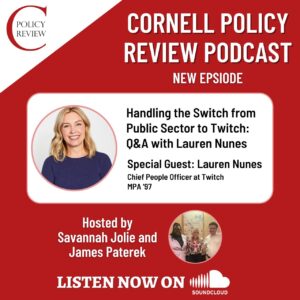Photo by Cytonn Photography
Edited by Sofia Olofsson
U.S. consumers spend billions every year automatically paying credit card bills for services for which they don’t realize they are being charged. This paper will address the United States Federal Trade Commission’s attempts to regulate such negative option billing provisions, and advocates for regulations limiting the temporal scope of negative option billing for unused services. The paper provides an introduction (I. Introduction to Negative Option Billing), reviews Federal Trade Commission regulation on negative option billing provisions (II. FTC Regulations), and finally explores the need for regulation of negative option billing in light of gray charges (III. Gray Charges and the Need for Further Regulation).
I. Introduction to Negative Option Billing
In the United States, people routinely enter into contracts for the provision of services and pay their bills with credit cards. While some of these contracts end unless the consumer expresses an intent to renew the contract, other contracts automatically renew unless the consumer explicitly rejects or cancels the agreement.[1] The Federal Trade Commission has broadly recognized the latter contracts as negative option contracts.[2] In these types of contracts, silence is treated as consent to the continuation of the contract.[3] The Federal Trade Commission recognizes four types of negative option contracts: pre-notification negative options plans, continuity plans, automatic renewals, and free-to-pay/nominal-fee-to-pay negative options.[4] Companies routinely use automatic renewal negative option contracts to charge consumers for goods or services until the customer explicitly rejects the charges or cancels a membership.[5] Effectively, “the consumer and the [service] provider have agreed to be in a relationship providing uninterrupted delivery of a particular service with the customer agreeing to automatic billing.”[6] Magazine subscriptions are the classic example of negative option billing;[7] 87% of all magazines use this form of billing. Many media and internet service providers also use automatic negative option contracts.[8] Companies employ negative option billing most frequently with provisions involving monthly charges, although the interval of time tends to vary by contract.[9]
If all transactions were still done in cash, companies’ needs to communicate with their consumers in order to collect payments would limit the impact of negative option marketing and billing practices.[10] The introduction of automatic bill payment (ABP) in 2005, however, has functionally removed this limitation for most service providers, since it virtually eliminated the need for consumers to view recurring bills.[11] It is estimated that about two-thirds of U.S. consumers with recurring bills use automatic payment options,[12] and that “[n]ine out of 10 people don’t check their credit-card charges carefully.”[13] This suggests that where there is significant overlap between automatic bill payment and negative option billing, consumes are particularly vulnerable.[14]
The rise of internet-based negative option marketing presents further challenges to regulators seeking to protect consumers.[15] Regulators must find ways to protect “online consumers . . .[who] exhibit certain characteristics, including inattention, unwarranted confidence, exuberance, and a desire for immediate gratification, which make them less likely to see and read disclosures.”[16] In one study by Visa Canada, 75% of consumers did not read all of the online text before accepting a tainted offer.[17] Consumers have a limited ability to understand and digest legalese, suggesting that, even if consumers did read the contract, there would be no guarantee that they would fully understand the nature of the negative option contracts to which they were agreeing.[18]
The combination of automatic bill pay and internet negative option billing has produced consumer outrage because together they allow consumers to unknowingly pay months or even years of charges for services they may not even be using.[19] Consequentially, negative option billing has “received a lot of negative attention lately from the Federal Trade Commission (FTC), various state attorneys general and other regulatory bodies.”[20]
II. FTC Regulations
The United States Federal Trade Commission is an administrative department that “works for consumers to prevent fraudulent, deceptive, and unfair business practices.”[21] In 2009, the Federal Trade Commission began a systematic review of its current guidelines and sought comments about regulating negative option contracts, and specifically sought comments about its negative option rule comments because they recognized “how times or technology have changed.”[22] In 2014, the Commission recognized evidence suggesting that consumer protection concerns beyond the scope of their Negative Option Rule existed; however, the Commission ultimately decided not to alter its rule because it felt that the Restore Online Shoppers’ Confidence Act would address those concerns.[23] The Federal Trade Commission’s Use of Prenotification Negative Option Plans rule—or, as it is more commonly known, its negative option rule—only applies to pre-notification negative option plans. The Federal Trade Commission’s Negative Option Rule does not apply to continuity plans, trial conversion, or automatic renewals.[24] Its main requirements are disclosure, informed consent to the billing structure, and the availability of simple cancellation and return mechanism.[25]
The Restore Online Shoppers’ Confidence Act “prohibits any post-transaction third party seller . . . from charging any financial account in an Internet transaction unless it has disclosed clearly all material terms of the transaction and obtained the consumer’s express informed consent to the charge.”[26] The act strongly addresses third-party sellers’ ability to charge consumers without their permission.[27] The acts does little, however, to address internet-based negative option contracts or automatic renewal negative option contracts other than echoing the Federal Trade Commission’s rule on pre-notification negative option contracts and applying these provisions to all types of negative option contracts formed on the internet. The Restore Online Shoppers’ Confidence Act requires that negative option contracts effectuated on the internet “(1) provides text that clearly and conspicuously discloses all material terms of the transaction before obtaining the consumer’s billing information; (2) obtains a consumer’s express informed consent before charging the consumer’s credit card, debit card, bank account, or other financial account for products or services through such transaction; and (3) provides simple mechanisms for a consumer to stop recurring charges from being placed on the consumer’s credit card, debit card, bank account, or other financial account.”[28]
Violations of this provision are considered unfair and deceptive practices, and enforcement actions are brought by the Federal Trade Commission. [29]
As the American Bar Association notes, “[t]he legality of a negative option turns on whether the consumer was aware of the billing structure at the time of enrollment, and consented to the billing structure.”[30] Negative option contracts that do not meet these requirements are treated as deceptive trade practices.[31] Moreover, any products shipped or services provided without informed consent are considered gifts.[32]
While the Federal Trade Commission has cracked down on some corporations that have violated its rule, the Commission’s regulation has generally permitted negative option contracts.[33] In this sense, the Federal Trade Commission has taken seriously the disclosure and affirmative consent requirements, bringing several multimillion dollar actions against alleged violators,[34] but it has not taken serious steps to limit use of negative option contracts generally. As long as sellers remain in compliance with disclosure and cancellation requirements, negative contracts are broadly permitted.[35]
III. Gray Charges and the Need for Further Regulations
The Federal Trade Commission’s present regulation does little address the consumer protection issues of negative option billing in the twenty-first century, though they have acknowledged these same exist.[36] The regulations rely substantially on disclosure and ease of cancellation requirements to address negative option billing. While these requirements are a step in the right direction and certainly prevent deceptive and fraudulent business practices, they offer consumers only minimal protection. While sellers ought not to hide material terms from consumers, the disclosure of terms alone is no guarantee of consumer safety. While the effectiveness of disclosure is certainly disputed, some authors have gone as far as arguing that disclosure requirements inundate consumers with information causing an information overload and thereby inhibiting consumer knowledge.[37] Moreover, requiring that sellers offer easy mechanisms for cancellation of negative option contracts does little to protect consumers who fail recognize recurring charges. Such charges are often called “Gray Charges,” which are defined as “[f]ees consumers pay via credit card or debit card for unwanted subscription services that are automatically renewed or that are automatically converted from a free trial to a paid subscription.”[38] Some consider these types of charges to be morally ambiguous;[39] they are viewed as problematic because many consumers do not realize they are even being charged, and even when they are aware, many consumers believe going through the process of disputing the charge is not worth the money they are spending.[40] These small recurring charges add up, however; more than 233 million gray charges occur annually, costing consumers 14.3 billion dollars a year.[41] The combination of negative option billing and automatic bill pay have created situations in which consumers are continually charged for unused services and left with no recourse for unnoticed charges. Further regulations can be crafted to address this gap in consumer protection with little impediment to the transactional benefits that negative option billing offers.
Proponents of negative options contracts often argue that, when properly regulated, negative option contracts can be in the best interests of both consumers and sellers.[42] Proponents point out that negative option contracts are not problematic for sophisticated parties,[43] and argue that sellers engaged in negative option contracts have natural market incentives to cancel unwanted services.[44] They further contend that negative option contracts always facilitate efficient transacting by reducing messaging costs, decreasing renewals costs, improving inventory reliability, and providing consumers with continuous service.[45] By limiting new regulations to extended time periods of unused services, new regulations could protect consumers while continuing to allow negative option contracts to reduce transaction costs.
Critics of negative options contracts express concern that in the consumer context there is a strong potential for abuse because, inter alia, consumers lack bargaining power.[46] Critics believe that negative option marketing and automatic payments can be used to exploit consumer’s economic characteristics in order “to burden them with unsought purchases and invisible payments.”[47] They argue that free market incentives are not strong enough to overcome the use of unscrupulous negative option contracts because vendors can plead ignorance and apologize in order to distort public perception of any wrongdoing on their part.[48] Moreover, certain critics contend that, contrary to eliminating transaction costs, negative option contracts simply shift transacting costs off to the post-transaction phase, where consumers spend time and resources trying to recover payments and cancel contracts.[49] They also argue that, as a result, negative option contracting “tends to reduce consumer information . . . obstruct expression of consumer preferences, and . . . exacerbates ex ante uncertainty about a product’s price and utility.”[50] (emphasis added).
The Federal Trade Commission presently recommends that sellers communicate with subscribers prior to the beginning of each automatic renewal term.[51] This recommendation should be a requirement. More precisely, the Federal Trade Commission should consider enacting a requirement that after a reasonable period of unused services, sellers need to reaffirm the consumer’s willingness to continue the negative option contract. Such a regulation would only minimally detract from negative option contracting’s cost-lowering function because it would only require periodic communication. The Federal Trade Commission could determine what constitutes a reasonable amount of time using its expertise and make adjudications sensitive to industry needs. Such a regulation would protect consumers from billions of dollars in gray charges, reduce post-transaction communication costs, and afford sellers the opportunity to measure the demand for their services more accurately.
References
- US Federal Trade Commission. “Negative options: a Report by the Staff of the FTC’s Division of Enforcement.” (2009); DePaul, Sara C. “When Silence Isn’t Consent: Negative Option Marketing.” (ABA Presentation, June 2014). ↑
- Ibid. ↑
- Stancil, Will. The One Weird Old Trick to Frustrate Online Scammers, Reduce Fees for Consumers, and Make Americans Happier with Their Finances, (University of Minnesota Digital Conservancy, 2013) http://hdl.handle.net/11299/152969 ↑
- US Federal Trade Commission. “Negative options: a Report by the Staff of the FTC’s Division of Enforcement.” (2009). ↑
- Stancil, Will. The One Weird Old Trick to Frustrate Online Scammers, Reduce Fees for Consumers, and Make Americans Happier with Their Finances, (University of Minnesota Digital Conservancy, 2013) http://hdl.handle.net/11299/152969 ↑
- US Federal Trade Commission. “Negative Options: An FTC Workshop Analyzing Negative Option Marketing.” (Jan. 25, 2007). ↑
- US Federal Trade Commission. “Negative options: a Report by the Staff of the FTC’s Division of Enforcement.” (2009). ↑
- “US Federal Trade Commission. “Negative Options: An FTC Workshop Analyzing Negative Option Marketing.” (Jan. 25, 2007). ↑
- Klein Moynihan Turco LLP. “Putting the Positive in Negative Option Billing,” http://www.kleinmoynihan.com/putting-the-positive-in-negative-option-billing/ ↑
- Stancil, Will. The One Weird Old Trick to Frustrate Online Scammers, Reduce Fees for Consumers, and Make Americans Happier with Their Finances, (University of Minnesota Digital Conservancy, 2013) http://hdl.handle.net/11299/152969 ↑
- Kemp, Karen. “Consumption Rises with Automated Bill Payment, Utility customers use more juice if they don’t see the bill.” Campus (April 29, 2015). ↑
- Kemp, Karen. “Consumption Rises with Automated Bill Payment, Utility customers use more juice if they don’t see the bill.” Campus (April 29, 2015). ↑
- Taylor, Chris. “How to Stop Sneaky ‘Gray Charges’ on Credit Card Bills.” Reuters News (Aug 24, 2015). ↑
- Stancil, Will. The One Weird Old Trick to Frustrate Online Scammers, Reduce Fees for Consumers, and Make Americans Happier with Their Finances, (University of Minnesota Digital Conservancy, 2013) http://hdl.handle.net/11299/152969 ↑
- US Federal Trade Commission. “Negative options: a Report by the Staff of the FTC’s Division of Enforcement.” (2009). ↑
- Ibid. ↑
- Roseman, Ellen. “Negative option billing persists despite laws.” CBC News (Mar. 27, 2012). ↑
- Burton, Shawn. “The Case for Plain-Language Contracts.” Harvard Business Review (Jan-Feb, 2018) https://hbr.org/2018/01/the-case-for-plain-language-contracts ↑
- Roseman, Ellen. “Negative option billing persists despite laws.” CBC News (Mar. 27, 2012); US Federal Trade Commission. “Negative options: a Report by the Staff of the FTC’s Division of Enforcement.” (2009). ↑
- See Supra 9 ↑
- Dorman, Frank. “FTC Will Keep Negative Option Rule In Its Current Form.” Federal Trade Commission Notice (July 25, 2014). ↑
- Fair, Lesley. “Acc-cen-tuate the Negative?” Federal Trade Commission,( July 29, 2014). ↑
- Dorman, Frank. “FTC Will Keep Negative Option Rule In Its Current Form.” Federal Trade Commission Notice (July 25, 2014). ↑
- Fair, Lesley. “Acc-cen-tuate the Negative?” Federal Trade Commission,( July 29, 2014) ↑
-
See Title 16: Commercial Practices PART 425—USE OF PRENOTIFICATION NEGATIVE OPTION PLANS, ELECTRONIC CODE OF FEDERAL REGULATIONS.
- 15 U.S.C. §§ 8401-8405; U.S. Federal Trade Commission. “Restore Online Shopper’s Confidence Act”, https://www.ftc.gov/enforcement/statutes/restore-online-shoppers-confidence-act ↑
- Klein, David O. “FTC Secures $22 Million Settlement for Alleged ROSCA Violations.” (2014). ↑
- §8403. Negative option marketing on the Internet (Pub. L. 111–345, §4, Dec. 29, 2010, 124 Stat. 3620.) ↑
- VonBergen, Clarence W.; Kernek, Courtney; Bressler, Martin S.; and Silver, Lawrence S. “Cueing the Customer Using Nudges and Negative Option Marketing,” Atlantic Marketing Journal: Vol. 5: Iss. 2, Article 12. (2016). ↑
- DePaul, Sara C. “When Silence Isn’t Consent: Negative Option Marketing.” ABA Presentation, (June, 2014). ↑
- Ibid. ↑
- Stancil, Will. The One Weird Old Trick to Frustrate Online Scammers, Reduce Fees for Consumers, and Make Americans Happier with Their Finances, University of Minnesota Digital Conservancy, (2013) http://hdl.handle.net/11299/152969 ↑
- Fair, Lesley. “Acc-cen-tuate the Negative?” Federal Trade Commission,( July 29, 2014). ↑
- Katz, Mitchell J.. “Marketers of Simple Pure Supplements Settle FTC Court Action, Federal Trade Commission.” (May 3, 2016); Dorman,Frank. “FTC Action: NutraClick Must Change Billing Practices Consumers Lured by ‘Free’ Trial Offers.” Federal Trade Commission, (September 22, 2016); Dorman,Frank. “ IWorks Billing Scheme Ringleader Agrees to Settle FTC Charges Jeremy Johnson Banned from Selling Grant Products.” Investment Opportunities and Continuity Programs; U.S. Federal Trade Commission. “Will Surrender Assets Worth Millions.” (August 29, 2016). ↑
- Stancil, Will. The One Weird Old Trick to Frustrate Online Scammers, Reduce Fees for Consumers, and Make Americans Happier with Their Finances, (University of Minnesota Digital Conservancy, 2013) http://hdl.handle.net/11299/152969 ↑
- Dorman, Frank. “FTC Will Keep Negative Option Rule In Its Current Form.” Federal Trade Commission Notice (July 25, 2014). ↑
- Ben-Shahar, Omri & Schneider, Carl E. “More Than You Wanted to Know: The Failure of Mandated Disclosure. Princeton University Press (2014); Hillman, Robert A., “Review of Omri Ben-Shahar and Carl E. Schneider, More than You Wanted to Know.” Cornell Legal Studies Research Paper No. 14-18. (June 27, 2014). ↑
- Investopedia, “Gray Charges.” https://www.investopedia.com/terms/g/gray-charges.asp ↑
- Ibid. ↑
- Taylor, Chris. “How to Stop Sneaky ‘Gray Charges’ on Credit Card Bills.” Reuters News (Aug 24, 2015). ↑
- Ibid. ↑
- VonBergen, Clarence W., Kernek, Courtney, Bressler, Martin S., Silver, Lawrence S. “Cueing the Customer Using Nudges and Negative Option Marketing,” Atlantic Marketing Journal: Vol. 5: Iss. 2, Article 12 (2016)(“Despite this, marketers and consumers alike have found this billing method to be a convenient and useful payment option over the years. With proper and prominent disclosures, a reasonable price point, an equitable refund policy, and a responsive customer service department (complete with a user-friendly cancellation policy), there is no reason to think that such billing cannot be a suitable business model.”). ↑
- Stancil, Will. The One Weird Old Trick to Frustrate Online Scammers, Reduce Fees for Consumers, and Make Americans Happier with Their Finances, University of Minnesota Digital Conservancy, (2013) http://hdl.handle.net/11299/152969 ↑
- See Supra 9 ↑
- DePaul, Sara C. “When Silence Isn’t Consent: Negative Option Marketing.” ABA Presentation, (June 2014). ↑
- VonBergen, Clarence W., Kernek, Courtney, Bressler, Martin S., Silver, Lawrence S. “Cueing the Customer Using Nudges and Negative Option Marketing,” Atlantic Marketing Journal: Vol. 5: Iss. 2, Article 12 (2016); U.S. Federal Trade Commission. “Negative options: a Report by the Staff of the FTC’s Division of Enforcement.” (2009) ↑
- Stancil, Will. The One Weird Old Trick to Frustrate Online Scammers, Reduce Fees for Consumers, and Make Americans Happier with Their Finances, (University of Minnesota Digital Conservancy, 2013) http://hdl.handle.net/11299/152969 ↑
- VonBergen, Clarence W., Kernek, Courtney, Bressler, Martin S., Silver, Lawrence S. “Cueing the Customer Using Nudges and Negative Option Marketing,” Atlantic Marketing Journal: Vol. 5: Iss. 2, Article 12 (2016). ↑
- Stancil, Will. The One Weird Old Trick to Frustrate Online Scammers, Reduce Fees for Consumers, and Make Americans Happier with Their Finances, University of Minnesota Digital Conservancy, (2013) http://hdl.handle.net/11299/152969 ↑
- Stancil, Will. The One Weird Old Trick to Frustrate Online Scammers, Reduce Fees for Consumers, and Make Americans Happier with Their Finances, (University of Minnesota Digital Conservancy, 2013) http://hdl.handle.net/11299/152969 ↑
- US Federal Trade Commission. “Negative Options: An FTC Workshop Analyzing Negative Option Marketing.” (January 25, 2007). ↑





